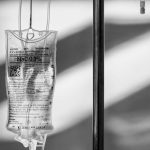Signals to Detect Potential Adverse Drug Reactions in Nursing Homes
Adverse Drug Reactions (ADRs) are defined as any response to a drug that is noxious or unintended and that occurs at doses typically used to prevent, diagnose, or treat disease. ADRs are the most frequent medication-related adverse events in the nursing home setting, with an incidence ranging from 1.19 to 7.26 per 100 resident-months.
Data from the largest study on ADRs in nursing homes suggest that more than half of the events are preventable and that 70% are associated with monitoring errors. Also, we know that the majority of preventable ADRs are also predictable and a primary responsibility of clinical consultant pharmacists working in nursing homes and other post-acute care settings is to detect, resolve, and prevent medication-related problems including ADRs.
One of the best ways to detect ADRs is to look for signals that they are or may occur. These include Laboratory and Medication Combination Signals, Medication Concentration Signals, and Antidote Signals.
Laboratory and Medication Combination Signals include
- Low blood sugar (hypoglycemia) in a patient taking a drug know to lower blood sugar especially if the patient’s food (caloric) intake declines
- Elevated potassium level (hyperkalemia) in a patient taking a drug known to raise potassium level including potassium chloride and spironolactone in a patient who becomes dehydrated
- Difficile infection in a person taking antibiotics or anti-ulcer drugs which increase the risk for c. difficile infection by reducing the population of beneficial bacteria that normally keep pathogenic organisms like c. difficile in check
Medication Concentration Signals include:
- Drug concentrations in the blood reach toxic levels due to excessive dosing or reduce clearance and elimination of the drug from the body
- Examples include:
- Digoxin in a patient who develops acute renal failure due to dehydration and/or excessive use of diuretics
- Theophylline in a patient who stops smoking without adjusting the dose of the drug
Antidote Signals
- Antidotes are drugs given to counteract the effects of a harmful drug or excessive dose of any drug. The use of an antidote signals an adverse drug reaction.
- Examples of antidotes include
- Naloxone in a patient taking an opioid analgesic like morphine
- IV dextrose, glucagon, or liquid glucose in a patient taking a drug known to cause hypoglycemia (i.e. insulin)
- Sodium polystyrene given to a patient taking a drug that may cause hyperkalemia
Pharmacists can monitor these ADR signals across a defined patient population to look for prescribing or administration practices that increase the risk of these ADRs. Also, they can work with the nursing homes they serve to assure adequate monitoring of drug levels and potential drug interactions that can help to prevent, predict, and prevent ADRs.
If an ADR can be predicted, it can be prevented.
Source: Handler SM et al Consensus List of Signals to Detect Potential Adverse Drug Reactions in Nursing Homes
JAGS 56:808 815, 2008




